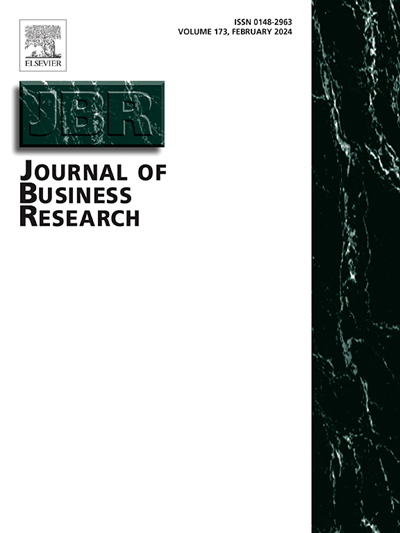服务营销组合与客户参与:荟萃分析
IF 9.8
1区 管理学
Q1 BUSINESS
引用次数: 0
摘要
服务品牌采用两种主要策略来促进客户参与(CE)。第一种是客户参与营销,它涉及一些深思熟虑的策略,比如竞赛或品牌自拍,旨在鼓励客户投入资源并与品牌互动。第二种策略依赖于传统的营销方法,而不是积极地促进CE,而是创造条件,使CE能够通过积极的产品或品牌体验有机地发生。研究表明,在推动消费电子产品方面,传统策略有时比客户参与营销更有效。尽管服务在全球经济中的重要性,很少有研究检验服务营销组合(SMM)对企业绩效有机发展的影响。本荟萃分析使用来自156篇研究论文的1188个个体效应量,代表了77,843名受访者的累积样本,量化了SMM元素对不同维度消费行为的统一直接影响。结果显示,SMM的“产品”和“人”元素在大多数CE维度上的影响最大,而“价格”和“促销”的影响较小。混合的“物证”、“地点”和“过程”元素在不同维度上表现出不同的影响。为了更深入地了解,我们分析了概念调节因子(行业类型、公司规模、地理位置和业务背景)和方法调节因子(数据收集方法和样本类型)如何影响直接效应。我们的分析揭示了企业规模、行业类型、研究实体、商业环境和地理位置的显著差异。最后,本文提出了优化中小企业投资以提高企业绩效的理论意义和管理指导。本文章由计算机程序翻译,如有差异,请以英文原文为准。
Service marketing mix and customer engagement: A meta-analysis
Service brands employ two primary strategies to promote customer engagement (CE). The first is customer engagement marketing, which involves deliberate tactics, such as contests or brand selfies, designed to encourage customers to dedicate resources and interact with the brand. The second strategy relies on traditional marketing approaches, which, rather than actively promoting CE, create conditions that enable CE to occur organically through positive product or brand experiences. Research suggests that traditional strategies can sometimes be more effective than customer engagement marketing in driving CE. Despite the significance of services in the global economy, little research examines the impact of the service marketing mix (SMM) on the organic development of CE. This meta-analysis quantifies the unified direct effect of SMM elements on different dimensions of CE using 1,188 individual effect sizes from 156 research papers, representing a cumulative sample of 77,843 respondents. Results reveal that the ‘product’ and ‘people’ elements of the SMM exert the strongest influence across most CE dimensions, while ‘price’ and ‘promotion’ demonstrate lower impact. ‘Physical evidence’, ‘place’, and ‘process’ elements of the mix exhibit varying effects across dimensions. For deeper insight, we analyze how conceptual moderators (industry type, firm size, geographic location, and business context) and methodological moderators (data collection approach and sample type) influence the direct effects. Our analysis reveals significant differences based on firm size, industry type, study entity, business context and location. We conclude with theoretical implications and managerial guidance for optimizing investments in the SMM to enhance CE.
求助全文
通过发布文献求助,成功后即可免费获取论文全文。
去求助
来源期刊

Journal of Business Research
BUSINESS-
CiteScore
20.30
自引率
10.60%
发文量
956
期刊介绍:
The Journal of Business Research aims to publish research that is rigorous, relevant, and potentially impactful. It examines a wide variety of business decision contexts, processes, and activities, developing insights that are meaningful for theory, practice, and/or society at large. The research is intended to generate meaningful debates in academia and practice, that are thought provoking and have the potential to make a difference to conceptual thinking and/or practice. The Journal is published for a broad range of stakeholders, including scholars, researchers, executives, and policy makers. It aids the application of its research to practical situations and theoretical findings to the reality of the business world as well as to society. The Journal is abstracted and indexed in several databases, including Social Sciences Citation Index, ANBAR, Current Contents, Management Contents, Management Literature in Brief, PsycINFO, Information Service, RePEc, Academic Journal Guide, ABI/Inform, INSPEC, etc.
 求助内容:
求助内容: 应助结果提醒方式:
应助结果提醒方式:


